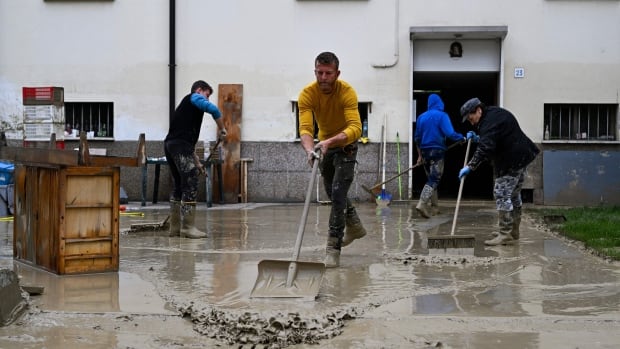Italy’s Emilia Romagna region will recover from the devastating floods that hit this week by taking from lessons learned from the 2012 earthquake, its governor said Friday, as the death toll from the disaster rose to 14.
“If there is a lesson we learned from the earthquake, it is that any emergency calls for prompt and rapid reconstruction” Stefano Bonaccini said.
“Nothing will stop,” the governor told reporters, referring to business, tourism and other activities in the wealthy northern region.
Reuters video footage from the town of Lugo in Emilia-Romagna showed cars submerged in water and flooded homes, as some residents rode bicycles or paddled through the watery streets.
More than 15,000 people have been forced to leave their homes due to floods and hundreds of landslides, and many blocked in their homes have no electricity and dwindling food supplies. Some evacuated flood victims sheltered in a national museum, where volunteers provided cots for them to sleep on.
Thousands of people were evacuated from the northern Italian region of Emilia Romagna after torrential rain triggered widespread floods. At least eight people have been killed.
“I am very happy here … But I feel bad,” 74-year-old evacuee Gabriella Valenti told Reuters. “I am among the luckiest maybe … I still have a home but there are people who lost everything. They don’t know what to do to make us feel good.”
Bonaccini, who is due to meet Italian Prime Minister Giorgia Meloni on Tuesday to discuss reconstruction efforts, said about 500 roads had been destroyed or damaged.
The floods are the latest in a series of extreme weather events that have slammed Italy over the past year, as once-exceptional disasters become a regular part of life.
The same area of Emilia-Romagna was battered by extreme weather at the beginning of May, with at least two people dying during storms.
Heavy rains followed months of drought which had dried out the land, reducing its capacity to absorb water, meteorologists said.


